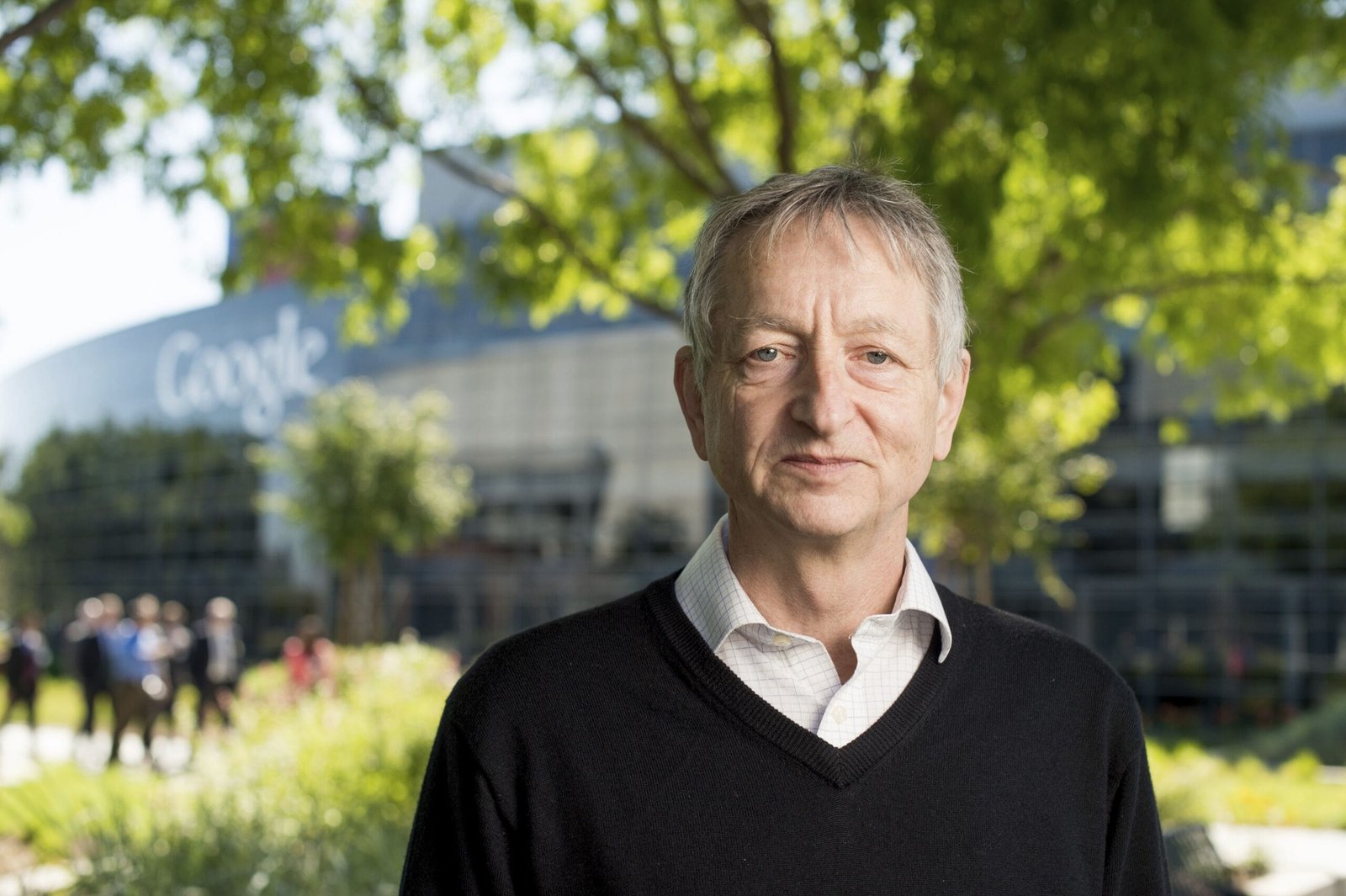
Scientists Behind AI Breakthroughs Awarded Nobel Prize
Geoffrey Hinton, professor emeritus at the University of Toronto, and John Hopfield, professor at Princeton University, were honored with the Nobel Prize in Physics for their pioneering contributions that laid the “foundation of today’s powerful machine learning.”
The Royal Swedish Academy of Sciences highlighted their work from the 1980s, which led to the development of artificial neural networks—computer systems inspired by the brain’s structure. These neural networks, which enable AI to “learn by example,” have been instrumental in advances like language processing and image recognition.
Hinton, often called the “Godfather of AI,” expressed his surprise at the award, stating, “I had no expectations of this. I am extremely surprised and I’m honoured.” His key contribution, the development of the Boltzmann machine, a generative model, played a significant role in modern AI.
Despite his monumental achievements, Hinton has raised concerns about the potential misuse of AI. In a 2023 New York Times interview, he expressed regret over his life’s work, noting, “It is hard to see how you can prevent the bad actors from using it for bad things.” He left his position at Google in 2023 to more openly discuss the dangers AI might pose.
The Nobel committee also acknowledged the work of John Hopfield, whose Hopfield network provided early insights into how artificial neural networks can replicate brain patterns. Both scientists’ discoveries have been crucial in shaping today’s AI technologies.
Hinton used tools from statistical physics, the science of systems built from many similar components. The machine is trained by feeding it examples that are very likely to arise when the machine is run. The Boltzmann machine can be used to classify images or create new examples of the type of pattern on which it was trained. Hinton has built upon this work, helping initiate the current explosive development of machine learning.
Hinton’s contributions build on the work of fellow Nobel laureate John Hopfield, who developed the Hopfield network, an artificial neural network designed to recreate patterns and store memory. This type of network, introduced in the 1980s, models how neurons in the brain interact, using a system that can “remember” and retrieve stored information. Hopfield’s work provided early insight into how artificial neural networks could replicate brain-like processes, paving the way for the more advanced machine learning and neural network models that Hinton and others would later develop.
The Hopfield network utilises physics that describes a material’s characteristics due to its atomic spin – a property that makes each atom a tiny magnet. The network as a whole is described in a manner equivalent to the energy in the spin system found in physics, and is trained by finding values for the connections between the nodes so that the saved images have low energy. When the Hopfield network is fed a distorted or incomplete image, it methodically works through the nodes and updates their values so the network’s energy falls. The network thus works stepwise to find the saved image that is most like the imperfect one it was fed with.
Hinton continues to express his concerns about the future of AI, reiterating these in a recent call with reporters. He noted, “We have no experience of what it’s like to have things smarter than us. And it’s going to be wonderful in many respects.” However, he also cautioned about the potential dangers, emphasizing the need to remain vigilant about “a number of possible bad consequences, particularly the threat of these things getting out of control.” Hinton’s remarks reflect his growing unease about the rapid development of AI technologies and their potential misuse.
Science
Why the Moon Turns Red: The Science Behind the Lunar Eclipse
On September 7, skywatchers across Asia, Africa, and Europe looked up to see the Moon slip from silver to dramatic red—a spectacular display that’s as much about Earth as it is about the Moon. Here’s why our Moon turns crimson every time a total lunar eclipse paints the sky.
What Actually Happens During a Total Lunar Eclipse?
A lunar eclipse occurs when the Earth moves precisely between the Sun and the Moon. While you might expect the Moon to disappear completely as it slips into Earth’s shadow, something far more beautiful happens: the Moon glows a deep red or orange, often called a “blood moon”.
This isn’t a rare magic trick. Lunar eclipses are a regular part of skywatching, but total eclipses—where the whole Moon is covered—are less common, occurring only a couple of times each year. The eclipse on September 7, 2025, is particularly notable for its long totality of 82 minutes and global visibility.
Why Does the Moon Look Red Instead of Black?
You’d think that when Earth blocks the Sun, the Moon would go entirely dark. Instead, it glows a haunting, coppery red. The explanation is pure science and a little bit of planetary teamwork.
Earth’s Atmosphere Is the Secret Ingredient
As the Moon passes through the darkest part of Earth’s shadow—called the umbra—the only sunlight that reaches the Moon has traveled through Earth’s atmosphere first. This journey bends and filters the light, removing the shorter blue wavelengths and letting through the longer red and orange wavelengths.

In other words, sunlight passes through a “ring” of Earth’s air. The bluer, shorter rays scatter (the same phenomenon that colors our daytime sky blue and sunsets orange/red), whereas the redder rays bend around the globe and spill onto the Moon’s surface. That’s why people all over the world see the Moon glowing red during the eclipse—it’s lit by every sunrise and sunset on Earth, all at once.
The Science: Rayleigh Scattering and Blood Moons
This filtering process is known as Rayleigh scattering—the same effect that gives us blue skies and those stunning red sunsets. When the Moon is inside the umbra, it catches sunlight that’s been bent through mammoth slabs of our planet’s air, with all the blue stripped out and only red and orange left to paint the lunar surface.
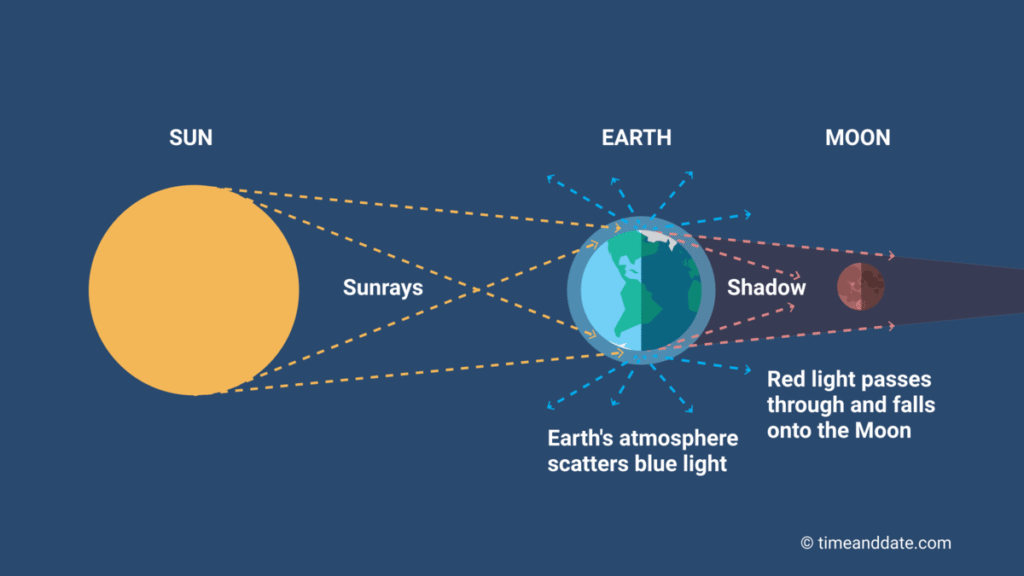
The term “blood moon” is popular, but not scientific. It’s just a poetic way of describing the result of this beautiful atmospheric chemistry.
Why the Color Varies Each Eclipse
Not every lunar eclipse looks the same. Sometimes the Moon shows a brighter orange; other times, it’s a dark rusty red. Volcanoes, wildfires, dust storms, and even local weather can all affect the clarity and color of the Earth’s shadow. For example, after a major volcanic eruption, there’s so much dust in the air that the Moon can appear an eerie, deep red or even brown.
A Universal Story in the Night Sky
One of the coolest things about a lunar eclipse is that it’s safe to watch with the naked eye—no fancy glasses needed! The next time you see the Moon turning red, remember: you’re looking at sunlight that’s passed through every sunrise and sunset on the planet, refracted and projected 380,000 km onto the Moon’s surface.
Fun Fact: If you were standing on the Moon during the eclipse, you’d see a ring of red light outlining Earth—a sight of all the sunsets and sunrises happening at that moment.
Science
Himachal Pradesh Declares Disaster Emergency: What Science Tells Us About the Himalayan Climate Crisis
With 300+ deaths and Rs 3,000 crore in damages, Himachal Pradesh just declared the entire state a disaster zone. But the real story isn’t just about this monsoon—it’s about how the Himalayas are fundamentally changing in ways that make tragedies like this the new normal.
This past week, Himachal Pradesh has declared its entire territory a ‘disaster-affected zone’ under the National Disaster Management Act, following unprecedented monsoon devastation across the state. The numbers behind this unprecedented decision are sobering: over 320 people dead, 1,337 roads blocked, and economic losses exceeding Rs 3,000 crores since June.
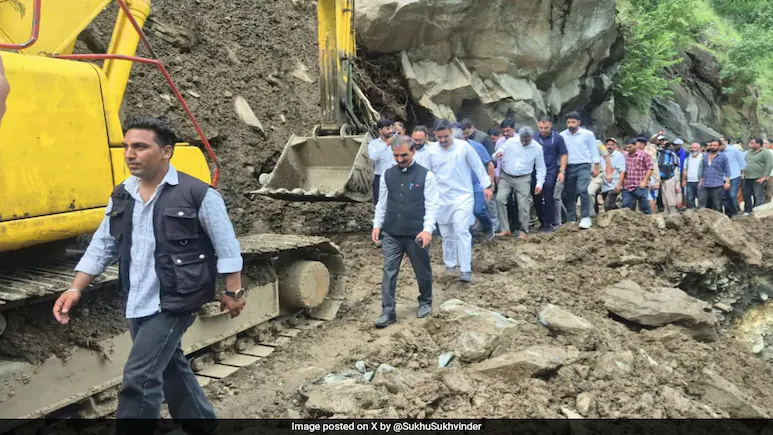
But here’s what the headlines aren’t telling you: this isn’t just about heavy rain. It’s about how climate change is rewiring one of the world’s most fragile mountain ecosystems, creating a perfect storm of geological instability, extreme weather, and human vulnerability.
The Scale of Devastation: By the Numbers
Let’s start with what’s happening right now. Since June 20, Himachal has been pummeled by what meteorologists are calling “extremely abnormal” weather patterns:
- 320+ deaths from landslides, flash floods, and weather-related accidents
- 1,280+ houses destroyed, with thousands more damaged
- 35,240 animals killed in the disasters
- Four national highways completely blocked
- 16 pilgrims died during the Manimahesh Yatra alone
The India Meteorological Department issued red alerts through September 2nd, predicting more “extremely heavy rainfall” of 200mm+ in single days. To put that in perspective, that’s more rain than many regions see in entire months.
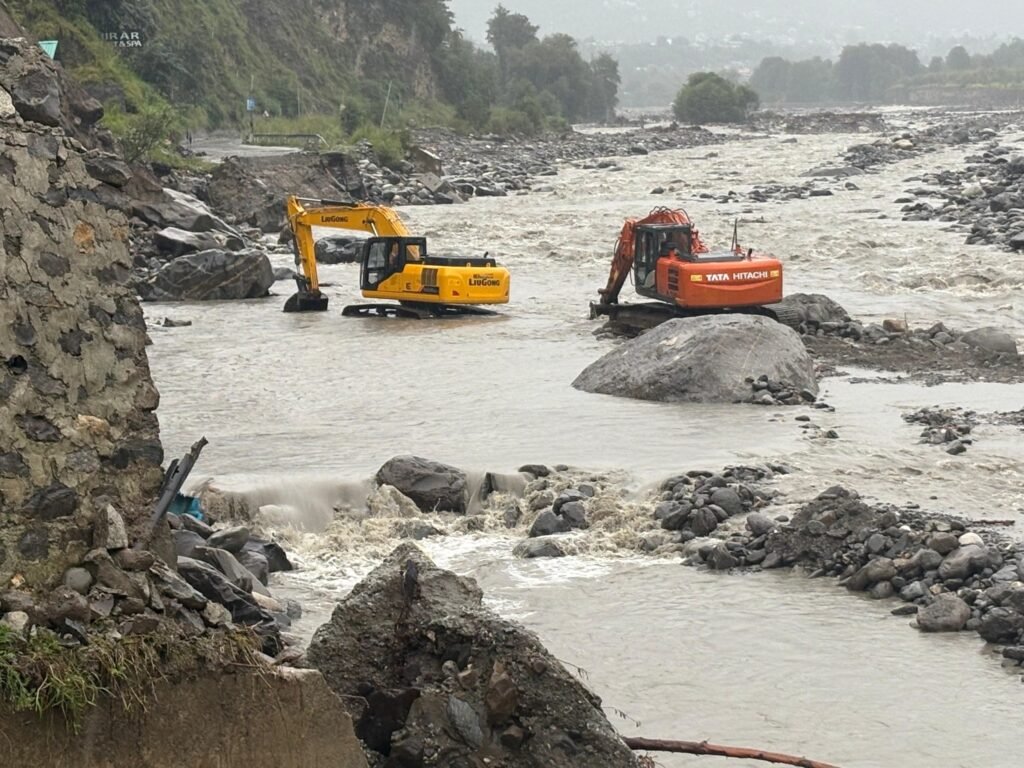
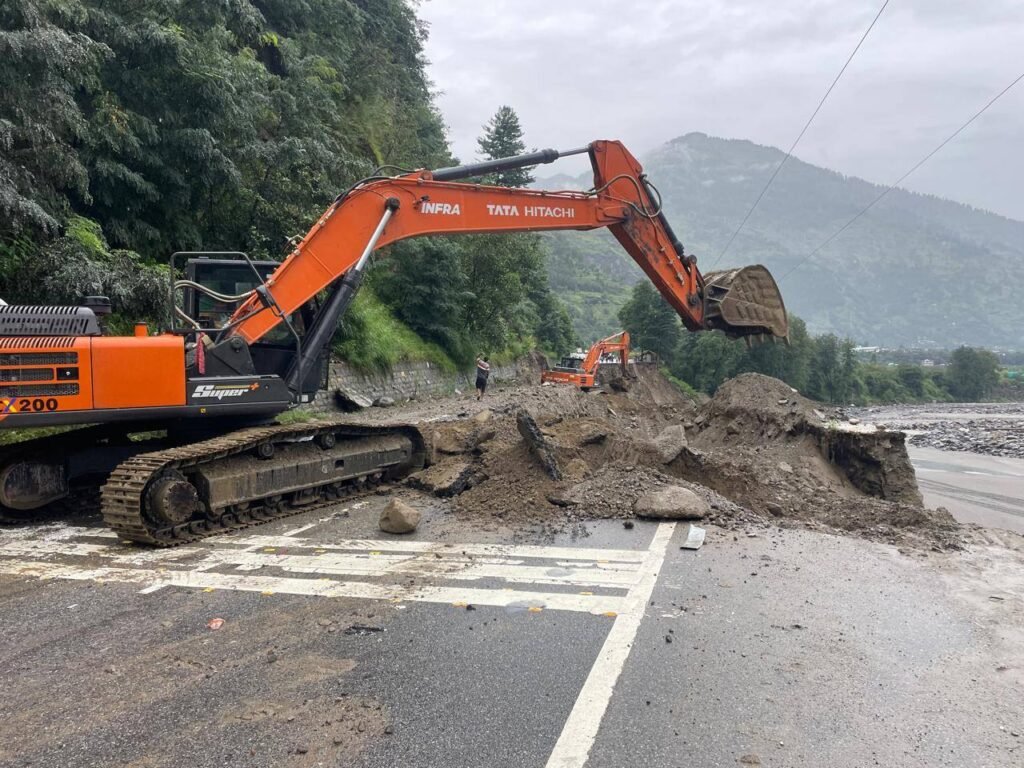
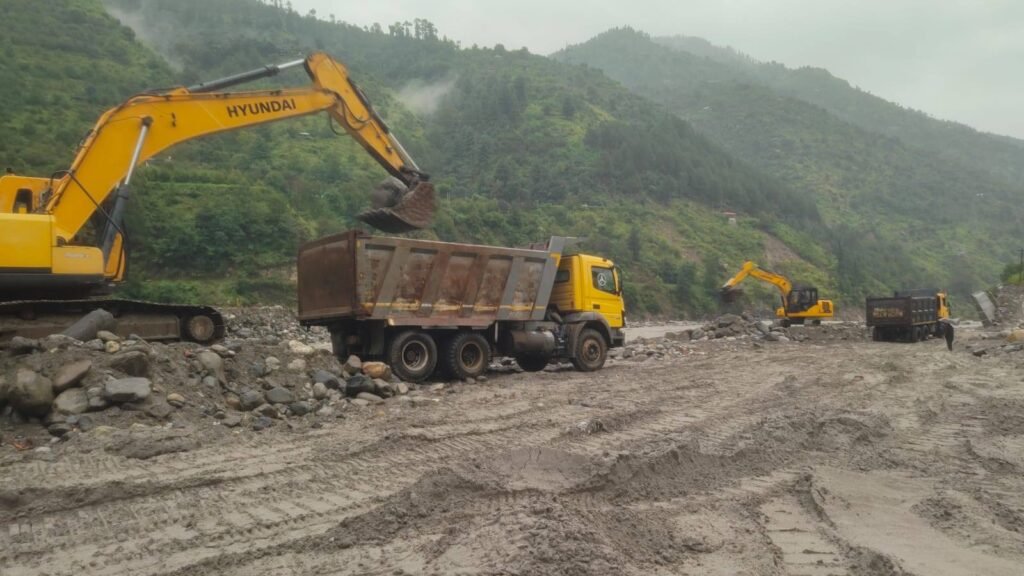
The Science Behind the Chaos
What makes this particularly alarming isn’t just the intensity—it’s the pattern. Down to Earth magazine’s analysis shows the Himalayan region has experienced at least one disaster daily between January and August 2025. That’s not weather; that’s a fundamental shift in how this ecosystem functions.
Dr. Navin Juyal, a geologist who’s studied Himalayan flooding patterns for decades, explains what’s actually happening: “Climate change allows each kilogram of air to hold more moisture, so storms unload precipitation more intensely and erratically. In steep vertical valleys, even modest amounts of water can set deep moraines and loose slopes in motion”.
Here’s the key insight: the Himalayas are warming faster than the global average, creating what scientists call “atmospheric rivers”—narrow corridors of concentrated water vapor that can dump enormous amounts of precipitation in very short periods.
The Geological Time Bomb
But the weather is only half the story. The real danger lies in what’s happening beneath our feet.
Geologist S.P. Sati describes the mechanism: “In such steep, narrow valleys, a landslide at one point triggers similar processes in other glacial branches in rapid succession, resulting in multiple floods”.
Translation: the Himalayas are essentially a geological house of cards. When one slope fails, it creates a domino effect that can devastate entire river valleys.
The numbers are stark:
- 50% of natural springs across the Indian Himalayan Region are drying up
- Himalayan glaciers are retreating rapidly, increasing flood risks
- 1,072 sq km of forest cover lost between 2019-2021 in Himalayan states
- 110 glaciers lost in Arunachal Pradesh alone over 32 years
Human Choices, Natural Consequences
Here’s where the story gets complicated. While climate change is loading the dice, human decisions are determining how catastrophic the results become.
Take Dharali village in Uttarakhand, which was devastated by flash floods in early August. Satellite images show the entire market was built on what geomorphologists call a “debris-flow fan”—essentially, land formed by centuries of flood deposits.
“Establishing a settlement on land where the river continually deposits sediments is precarious,” says Wolfgang Schwanghart, a geomorphologist at the University of Potsdam who studies Himalayan disasters.
The pattern repeats across the region: construction on riverbeds, unauthorized buildings in landslide-prone areas, and infrastructure projects that alter natural drainage patterns without proper geological assessment.
The Broader Himalayan Crisis
Himachal’s disaster declaration comes as the entire Himalayan arc faces similar pressures. The region supports over 50 million people directly and provides water security for 600+ million through major river systems.
Key vulnerabilities by region:
- Ladakh: Glacier retreat and permafrost thaw
- Jammu & Kashmir: Frequent landslides along defense highways
- Uttarakhand: Erratic rainfall worsened by tourism pressure
- Sikkim: Transboundary glacial floods
- Arunachal Pradesh: Sudden river floods with inadequate warning systems
The 15th Finance Commission allocated Rs 1.6 lakh crore for climate resilience, but experts worry it’s not enough.
What This Means for the Future
Climate scientists are clear: this is the new normal, not an exception. Ashutosh Kumar from IIT Mandi explains: “Shorter, erratic bursts of weather—brief dry spells followed by intense moisture—mean slopes never fully dry out and therefore remain persistently weakened”.
The immediate priorities, according to experts:
- Moratorium on large projects in fragile zones until proper geological studies
- Real-time monitoring systems for dams, glacial lakes, and unstable slopes
- Community-specific early warning systems
- Dignified relocation for people in high-risk areas
The Uncomfortable Truth
Environmental campaigner Hemant Dhyani puts it bluntly: “The Himalayas must no longer be viewed as a source of revenue. You cannot justify destroying this natural treasure for short-term gains”.
But here’s the challenge: the same development projects causing geological instability are also providing jobs and economic opportunities for mountain communities. Finding sustainable alternatives isn’t just an environmental imperative—it’s an economic necessity.
Beyond Disaster Management
What’s happening in Himachal isn’t just a state emergency; it’s a preview of climate adaptation challenges across mountain regions worldwide. The solutions require thinking beyond traditional disaster response to fundamentally rethinking how humans live in rapidly changing mountain environments.
The science is clear: more intense rainfall, more unstable slopes, and more frequent disasters are now built into the Himalayan climate system. The question isn’t whether similar disasters will happen again—it’s whether we’ll learn to work with these new realities instead of being repeatedly surprised by them.
As one Dharali resident told rescuers: “We urged the administration to halt construction near the river, but nothing was done.” Now entire markets lie buried under 12 meters of debris.
The mountains are sending us a message. The question is whether we’re finally ready to listen.
What are your thoughts on balancing development needs with environmental protection in fragile mountain ecosystems? Have you experienced similar weather changes in your region?
Science
September Skywatch: Preview of All Celestial Highlights
Stock up on coffee, dust off those binoculars, and set your alarm—September’s sky calendar is absolutely stacked, and some of these events won’t come around again for years.
If you’re the kind of person who looks up at night just in case something magical’s happening, September is about to be your month. For seasoned stargazers, casual phone photographers, and everyone who’s just curious about what’s actually up there, here’s your guide to the most unmissable celestial events in September 2025.
Let’s face it: after a wild summer, we could all use a reason to stand outside at midnight and remember how cool the universe really is.
September’s Top Sky Events (Mark Your Calendar!)
Total Lunar Eclipse — September 7

Call your friends, grab your favorite snacks—this is the big one. On the 7th, India and much of Asia will get a front-row seat to a total lunar eclipse. The best part? It’s happening at a comfortable evening hour for most of us. The moon will turn that classic coppery “blood moon” red, and you don’t need any fancy gear—just clear skies and maybe a pair of binoculars to see craters in vivid detail. Don’t forget to make a wish. (I always do. Can’t prove it works, but hey—what if?)
- Peak Time (India): Around 8:45 PM IST
- How to Watch: Find a dark spot, give yourself about 30 minutes to adjust your eyes, and look up!
- Photographer Tip: Set your phone on Night Mode, brace against a wall, and you’ll get surprisingly good shots.
The Pleiades & A Rare Lunar Occultation — September 12

Star lore fans and night owls, this one’s for you. The Pleiades, often called the Seven Sisters, are a beautiful open star cluster in Taurus. On the night of the 12th, the moon will pass directly in front of (or “occult”) them. It’s a subtle, magical event that looks stunning through binoculars.
- Peak Time: Roughly 10-11 PM IST
- Where to Look: Towards the eastern sky, after moonrise
- Why It Matters: Lunar occultations of the Pleiades are rare and mesmerizing, like the universe is showing off just for you.
Saturn at Opposition — September 21

Saturn lovers, this is your night. When a planet’s at “opposition,” it’s closest to Earth and shines brightest for the year. Saturn will rise with the sun setting and is visible all night long—big, bright, and ringed. Even a small telescope or powerful binoculars should let you glimpse the rings, which never gets old.
- Pro Tip: Point your phone camera through the telescope eyepiece for easy astro-photography.
- Bonus: Look for Titan, Saturn’s largest moon, as a small pinprick of light nearby.
Equinox & Changing Seasons — September 23
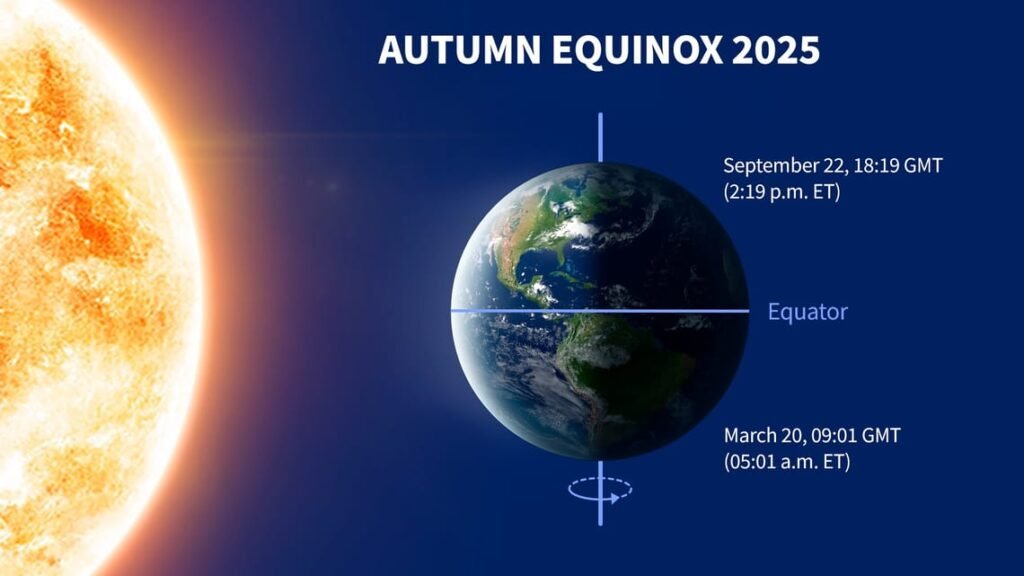
Not as “wow” visually, but astronomically important. The autumnal equinox is when day and night are (basically) equal length all over the world. In India, this means the end of the rainy season and slightly cooler nights. The Milky Way is still visible overhead in the early evening, especially if you can get away from city lights.
Other Stealthy Sky Attractions
- Pre-dawn Venus: The “Morning Star” will be dazzling before sunrise all month.
- Orionids Meteor Shower (Early Preview): The real peak is in October, but you might spot a few early stragglers after midnight in the last week of September.
- ISS Flyovers: Check an app like Heavens-Above for when the International Space Station passes overhead—it moves fast and looks like a bright, steady “star” gliding by.
Pro Tips for First-Time Skywatchers
- App Up: Download a free sky map app (like Stellarium or SkySafari) and point your phone at the sky to ID stars and planets instantly.
- Red Flashlight: Use red cellophane on your torch if you’re night-watching; red light won’t wreck your night vision.
- Safety First: If you’re heading outside late, go with a friend and tell someone where you’re going. Snacks are highly recommended. 😉
- Photo Challenge: Tag your best snaps #SeptemberSkyWatch—there’s always a community eager to geek out with you.
Why September 2025 Is Special
Celestial events come in cycles, but combos like a total lunar eclipse and a rare star occultation in the same month? That’s a treat. Whether you’re making it a solo adventure, a family activity, or a date, September’s sky show has a little something for everyone.
In a world full of distractions, looking up is still the best kind of reset.
Let me know if you catch something amazing—or if you just want to share a blurry moon photo (we’ve all been there). Clear skies!
-

 Science1 month ago
Science1 month agoWhy the Moon Turns Red: The Science Behind the Lunar Eclipse
-

 Science2 months ago
Science2 months agoSeptember Skywatch: Preview of All Celestial Highlights
-

 Science1 month ago
Science1 month agoHimachal Pradesh Declares Disaster Emergency: What Science Tells Us About the Himalayan Climate Crisis
-

 Tech News1 month ago
Tech News1 month agoiPhone 17 Pricing Shock: India Faces Steepest Price Increases in Apple History
-

 Tech News2 months ago
Tech News2 months agoUS Revokes TSMC’s Fast-Track China Export Status as Chip War Escalates
-

 Tech News2 months ago
Tech News2 months agoMicrosoft Breaks Free: Launches First In-House AI Models to Challenge OpenAI Partnership
-

 Tech News2 months ago
Tech News2 months agoAnthropic Raises Massive $13 Billion at $183 Billion Valuation
-

 Tech News1 month ago
Tech News1 month agoRed Sea Cable Cuts Cripple Microsoft Azure, Disrupt 17% of Global Internet Traffic



















